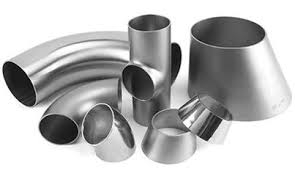The Ultimate Guide to Stainless Steel Fittings: Manufacturing, Types, and Applications

Stainless steel fittings play a crucial role in various industries, from plumbing and construction to food processing and pharmaceuticals. Their durability, corrosion resistance, and versatility make them indispensable components in countless applications. In this comprehensive guide, we'll delve into the world of stainless steel fittings, exploring their manufacturing processes, different types, and wide-ranging applications.

Manufacturing Process:
stainless steel fitting manufacturers through several processes, each ensuring high quality and precision. The primary manufacturing methods include:
-
Casting: Stainless steel fittings can be cast using methods such as investment casting or sand casting. Investment casting, also known as lost-wax casting, involves creating a wax pattern of the fitting, coating it with ceramic, and then melting the wax to leave a ceramic mold. Molten stainless steel is poured into the mold, creating the desired shape.
-
Machining: Machining involves shaping stainless steel fittings using lathes, mills, drills, and other cutting tools. This process is suitable for producing fittings with intricate designs or custom specifications.
-
Forming: Stainless steel fittings can also be formed through processes like forging, where metal is shaped by applying pressure through a die or a hammer. Cold forming, such as bending or cold heading, is another method used to create fittings without heating the material.
Types of Stainless Steel Fittings:

Stainless steel fittings come in various types, each designed for specific applications and installation requirements. Some common types include:
-
Pipe Fittings: These fittings are used to connect pipes or tubing sections, allowing for changes in direction, branching, or termination of the pipe system. Types of pipe fittings include elbows, tees, reducers, couplings, and flanges.
-
Tube Fittings: Tube fittings are used in tubing systems for fluid or gas transport. They provide leak-tight connections and are available in compression, push-to-connect, and flare configurations.
-
Sanitary Fittings: Sanitary fittings are designed for applications requiring cleanliness and hygiene, such as in food processing, pharmaceuticals, and biotechnology. These fittings have smooth surfaces and are easy to clean to prevent contamination.
-
Instrumentation Fittings: Instrumentation fittings are used in high-pressure and high-temperature applications, such as in oil and gas, petrochemical, and chemical industries. They provide secure connections for instrumentation and control systems.
-
Plumbing and HVAC Systems: Stainless steel pipe fittings are widely used in plumbing and HVAC systems for water supply, heating, ventilation, and air conditioning.
-
Food and Beverage Industry: Sanitary fittings are essential in the food and beverage industry for processing, packaging, and transporting consumable products safely and hygienically.
-
Petrochemical and Oil Refining: Instrumentation fittings are crucial in petrochemical plants and oil refineries for monitoring and controlling processes with precision and reliability.
-
Construction: Stainless steel fittings are used in construction for structural support, railing systems, and architectural elements due to their strength, durability, and aesthetic appeal.
Conclusion:
Stainless steel fittings play a vital role in various industries, offering durability, corrosion resistance, and versatility. Understanding the manufacturing processes, types, and applications of stainless steel fittings is essential for selecting the right components for specific needs. Whether in plumbing, food processing, petrochemicals, or construction, stainless steel fittings continue to be a preferred choice for their performance and longevity.
- Industry
- Art
- Causes
- Crafts
- Dance
- Drinks
- Film
- Fitness
- Food
- Games
- Gardening
- Health
- Home
- Literature
- Music
- Networking
- Other
- Party
- Religion
- Shopping
- Sports
- Theater
- Wellness
- News


